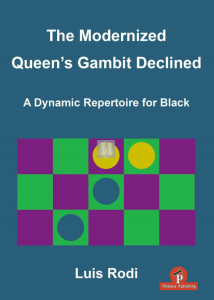Typical Queen´s Gambit Exchange Variation
Muller Karsten

Effective Middlegame Training
In designing this book, the author was guided by the following considerations. If you want to learn this or that opening, you can choose from dozens or even hundreds of textbooks. But what if you want to get familiar with the middlegame strategy used in positions that have emerged from exactly this or that opening? Or to put it another way: in positions that are typical for this or that opening.
Descrizione
Effective Middlegame Training
In designing this book, the author was guided by the following considerations. If you want to learn this or that opening, you can choose from dozens or even hundreds of textbooks. But what if you want to get familiar with the middlegame strategy used in positions that have emerged from exactly this or that opening? Or to put it another way: in positions that are typical for this or that opening.
Of course, in every middlegame textbook there's one or the other position that clearly comes from this or that opening. However, their number is negligible in the context of example positions from all the other openings whose middlegame treatment the reader doesn't want to learn at all.
For example, aren't the issues of hanging pawns and minority attack – the author asks with good reason – just as dispensable for an e4 player as they are essential for a d4 player? – Why should a die-hard enthusiast of Indian openings care about the strategic intricacies of positions resulting from all those complicated Queen's Gambit systems? And of course vice versa: what use are all these subtleties of Indian positions to a player who 'by nature' avoids fianchetto openings?
And it's precisely this conspicuous and astounding vacuum in the area of middlegame literature that inspired the author to make an appropriate attempt at improvement: If you want to learn Sicilian middlegame strategy, you will get a textbook and exercise book in which only Sicilians are
treated.
However, this book only deals with the Queen's Gambit – more precisely: the Exchange Variation with white pawns on e3 and d4 against black pawns on c6 and d5 – the so-called 'Carlsbad structure'.
It deserves special mention that the 120 exercises have been assigned to specific topics for the benefit of entertaining diversity – for example 'the relegation candidate', 'the only move', 'violence or pressure increase' and the like.
Informazioni
- Casa editrice Joachim Beyer Verlag
- Codice 8419
- Anno 2023
- Pagine 178
- Isbn 9783959201803
 Italiano
Italiano
 English
English




